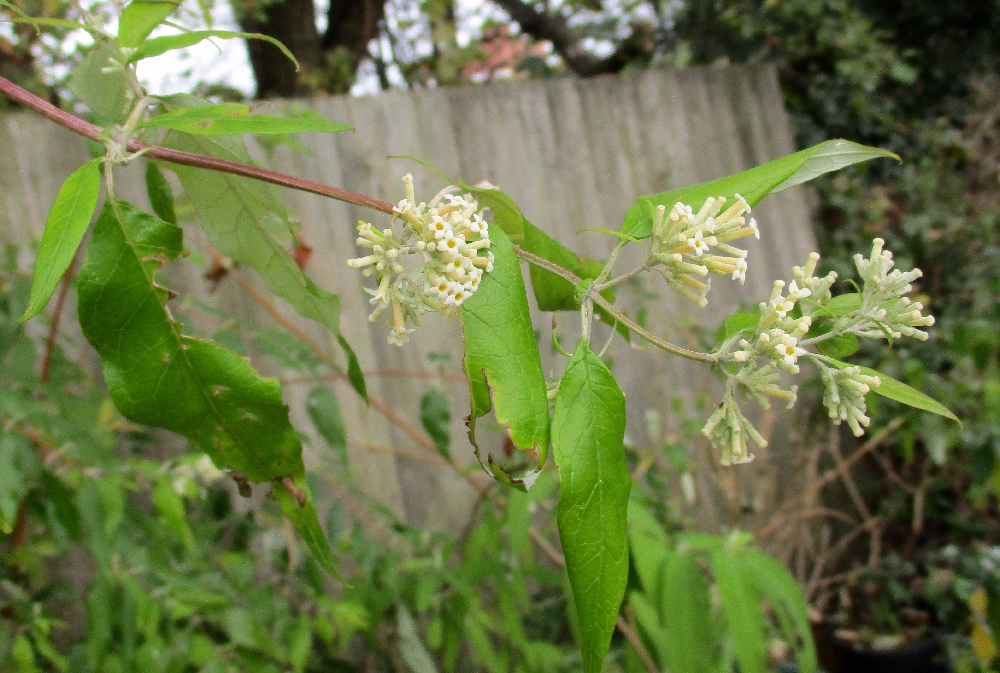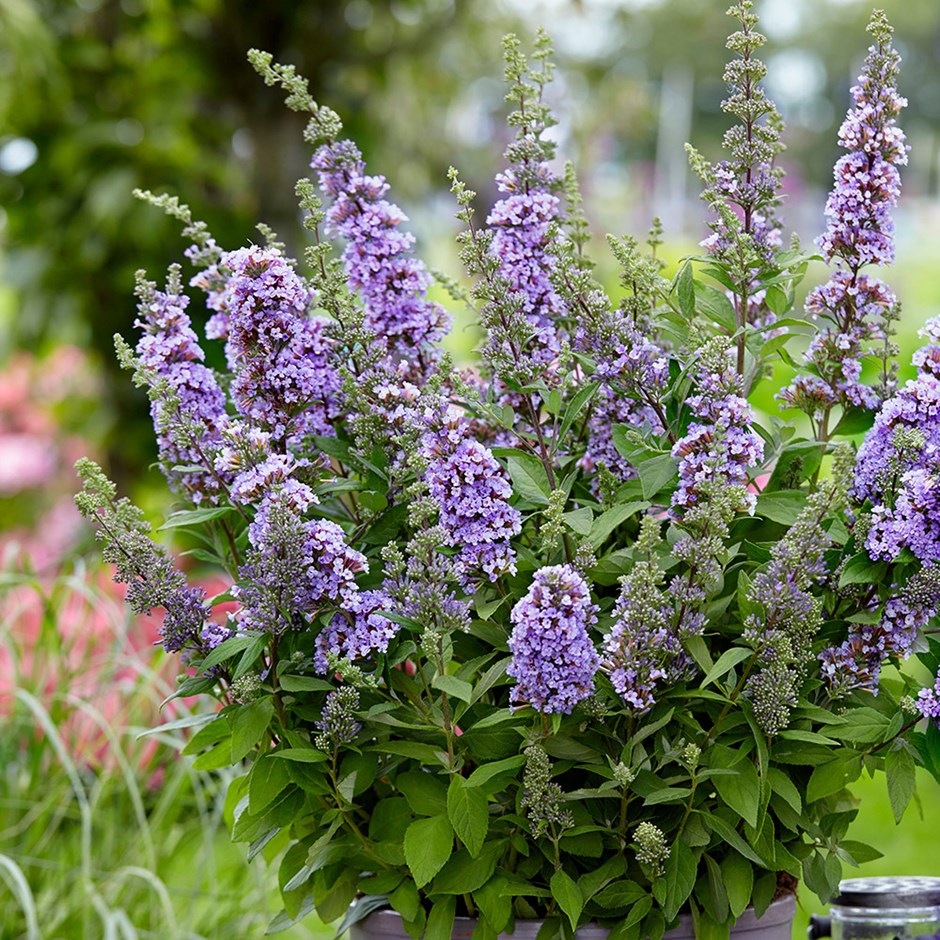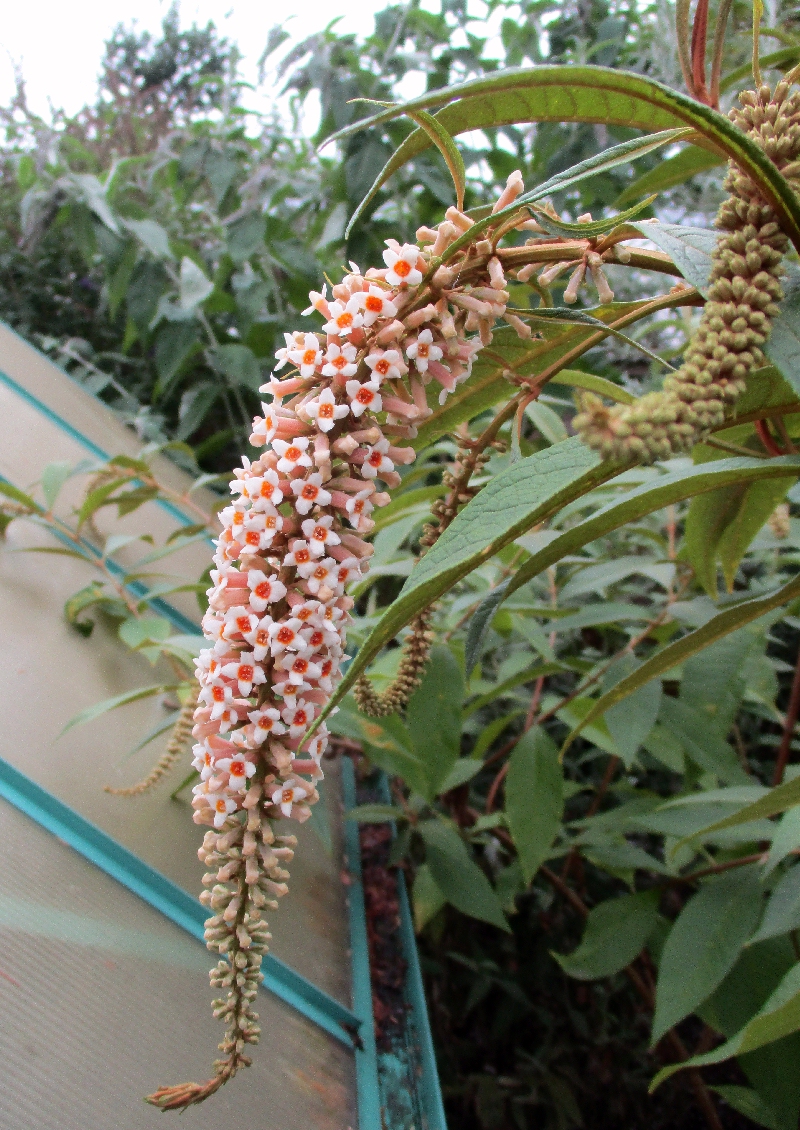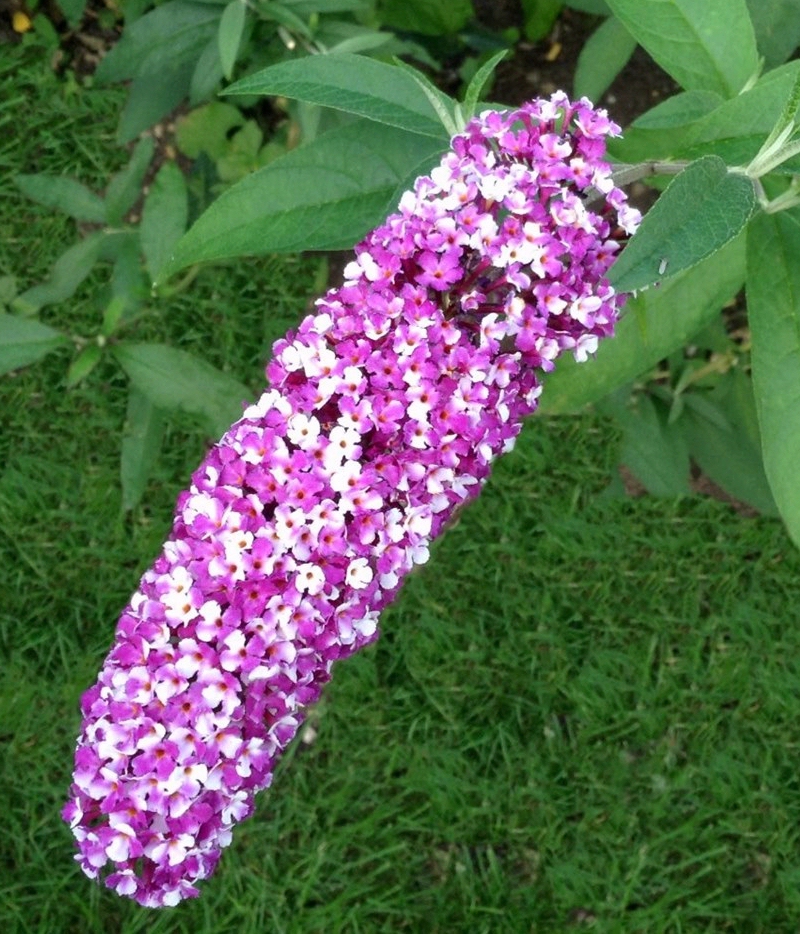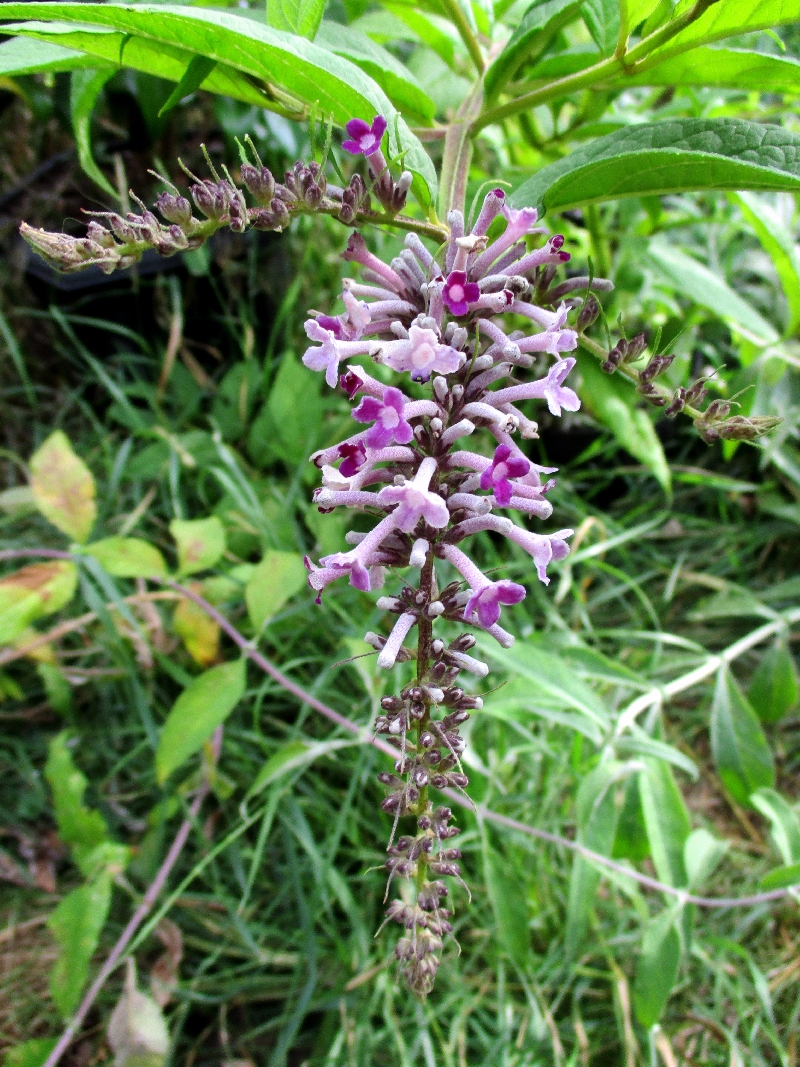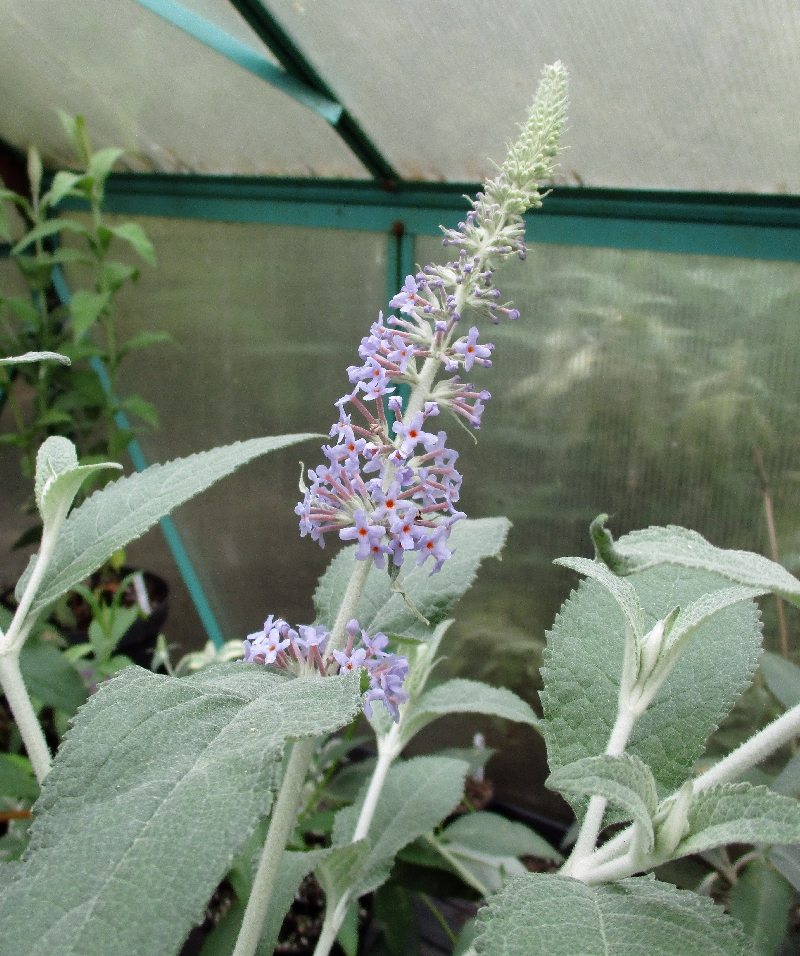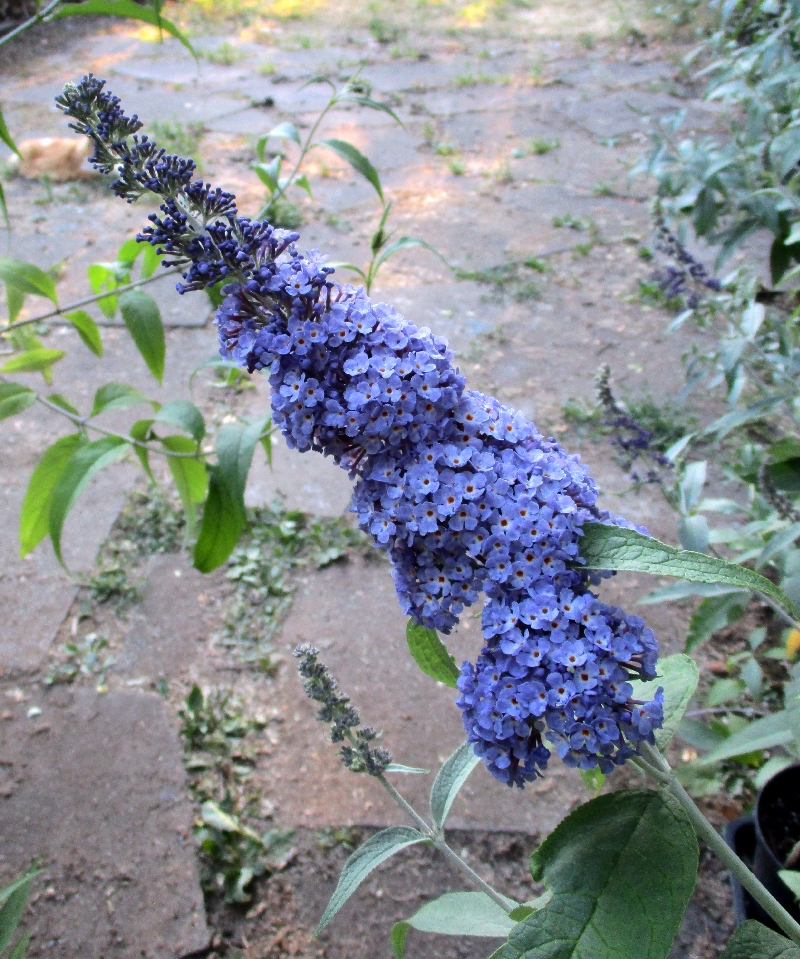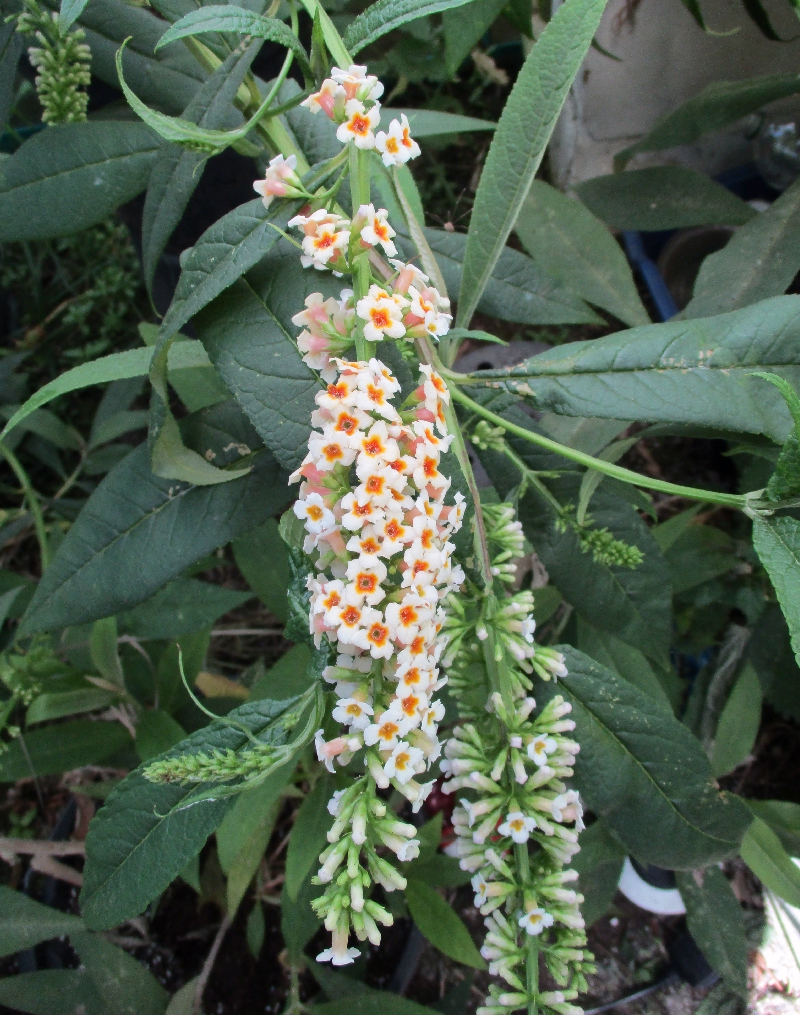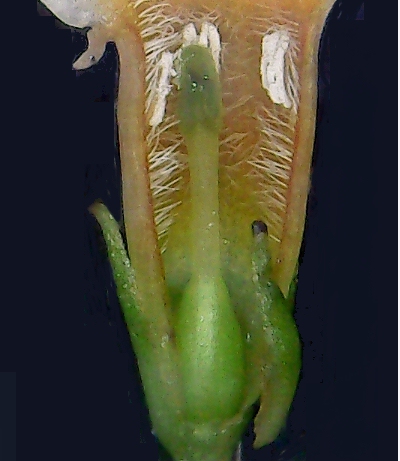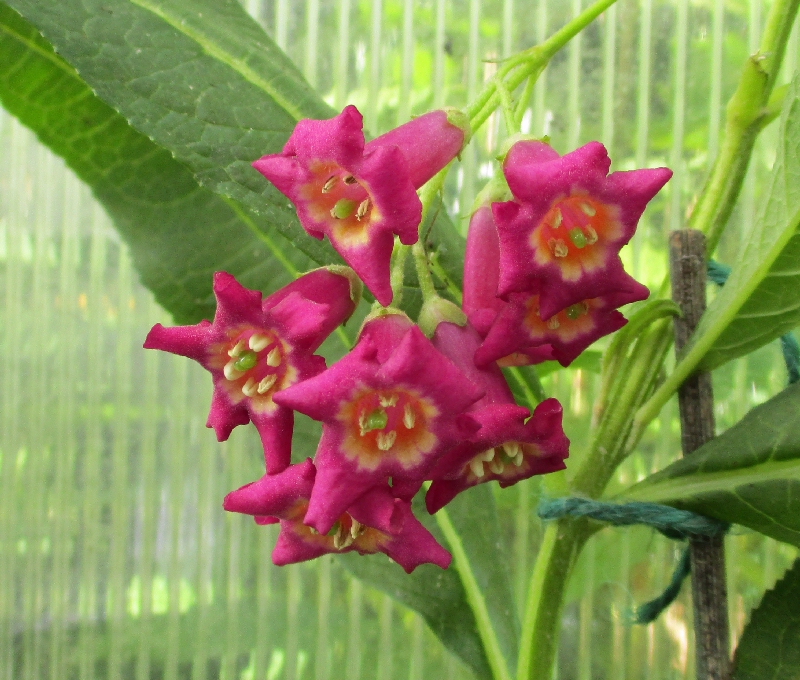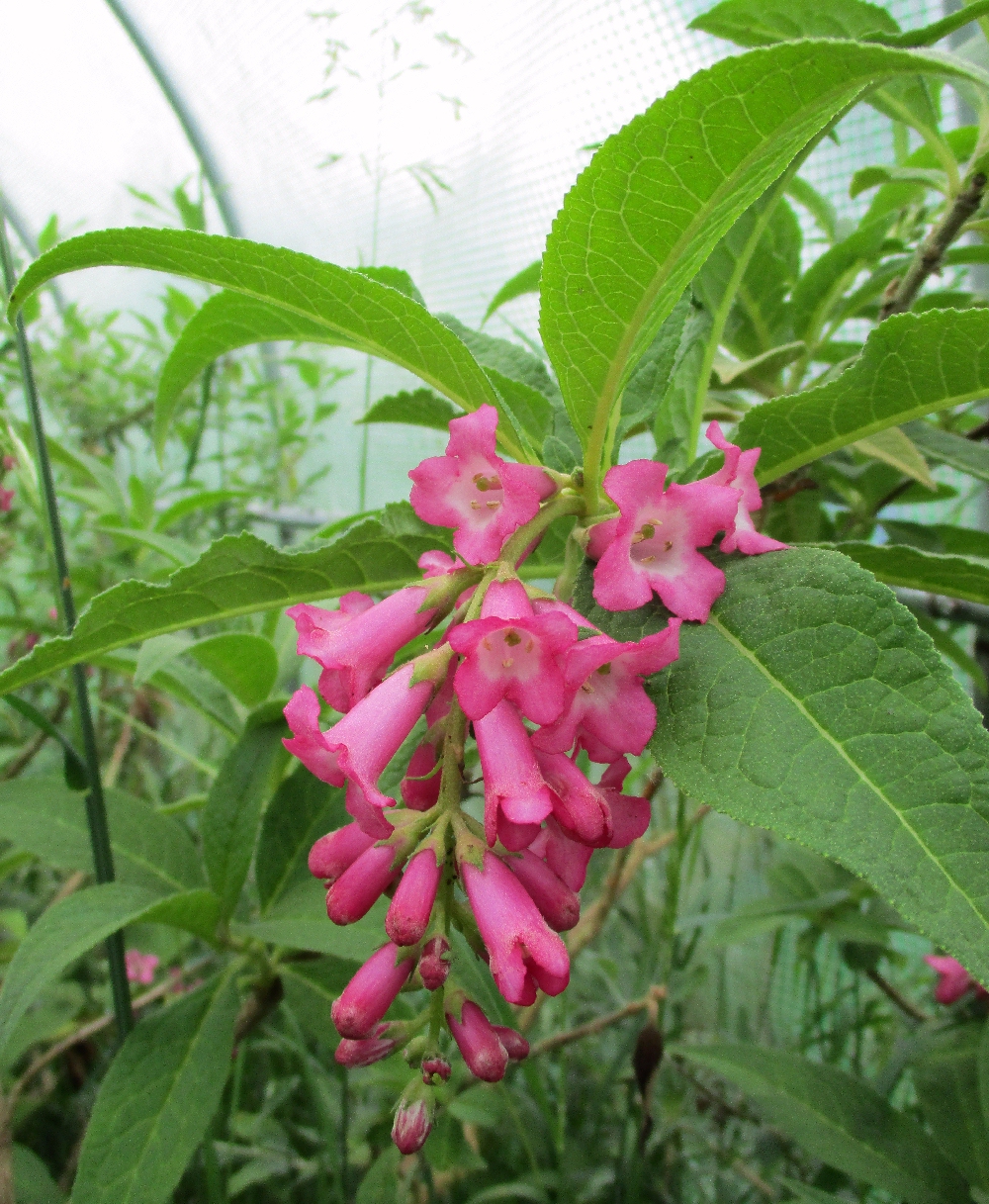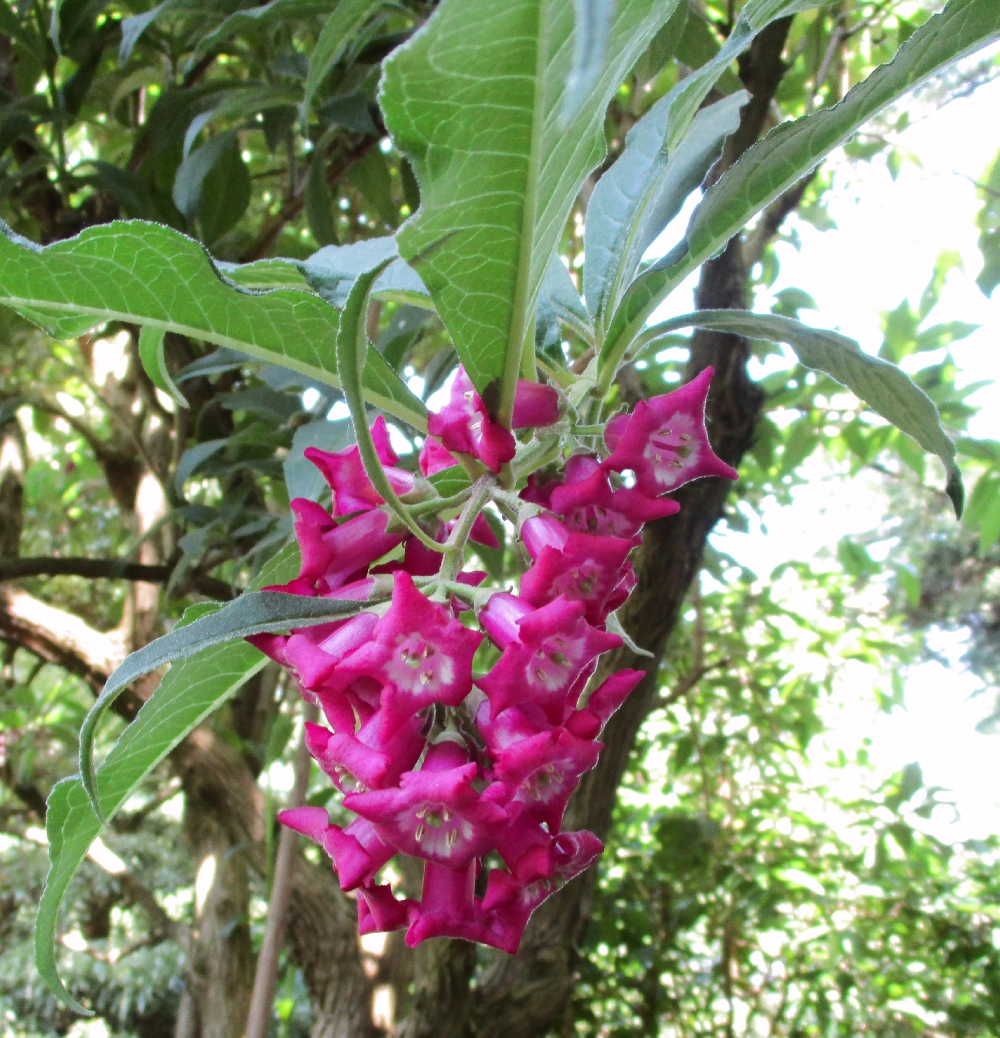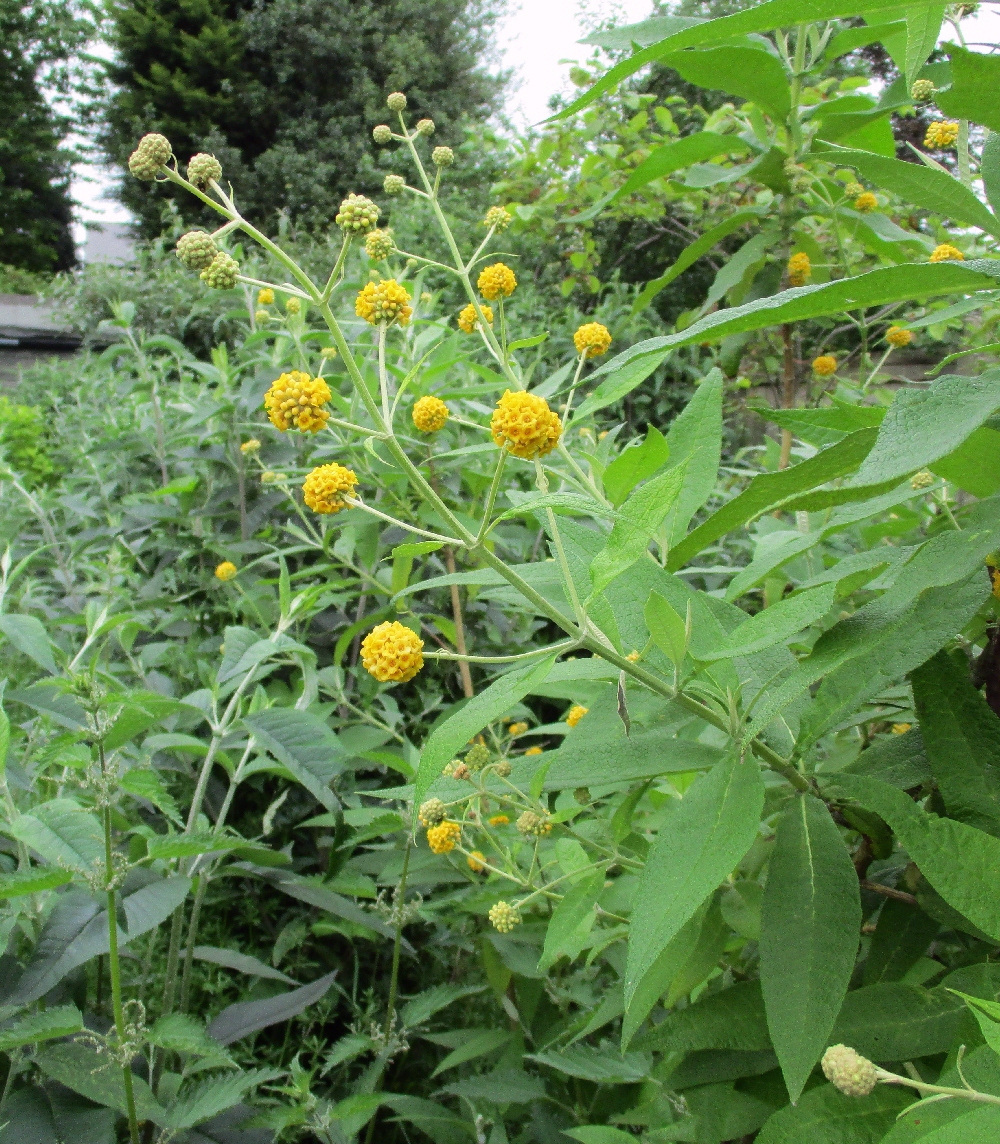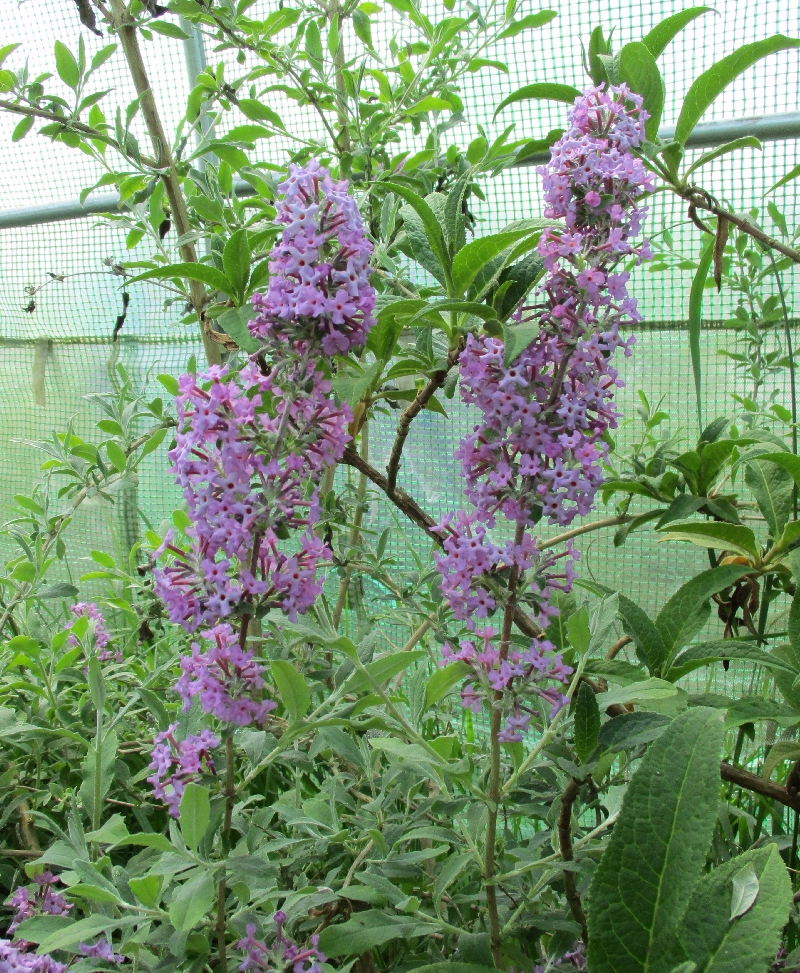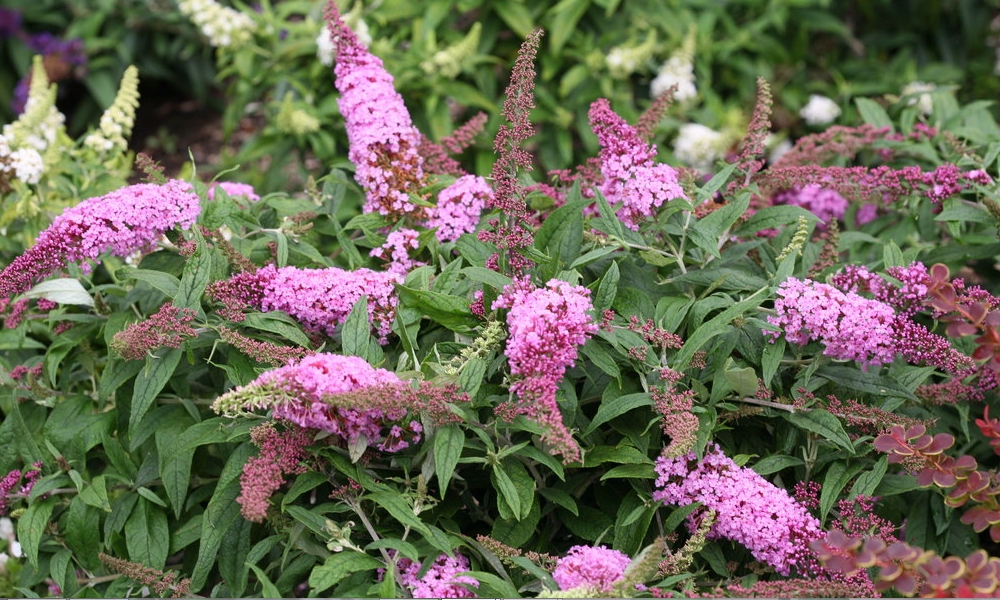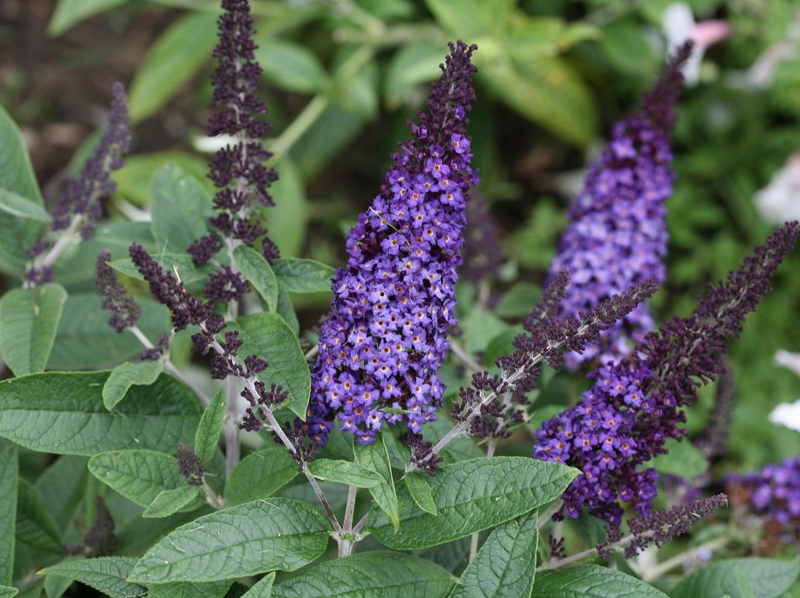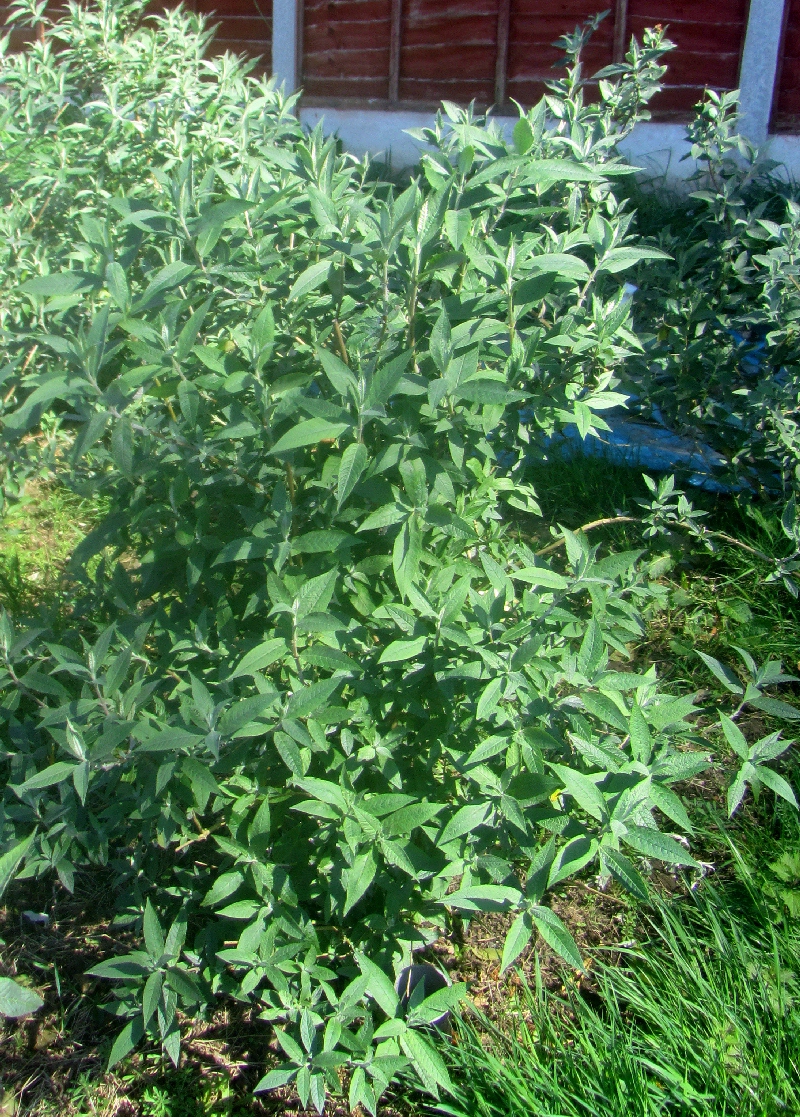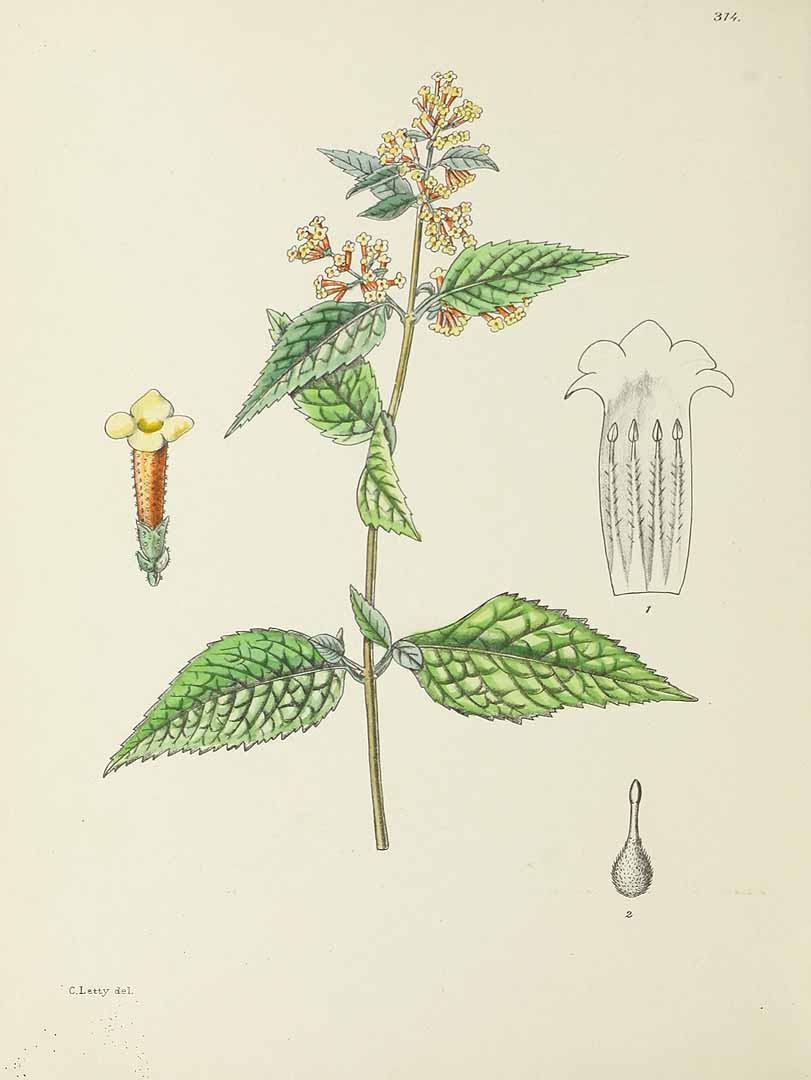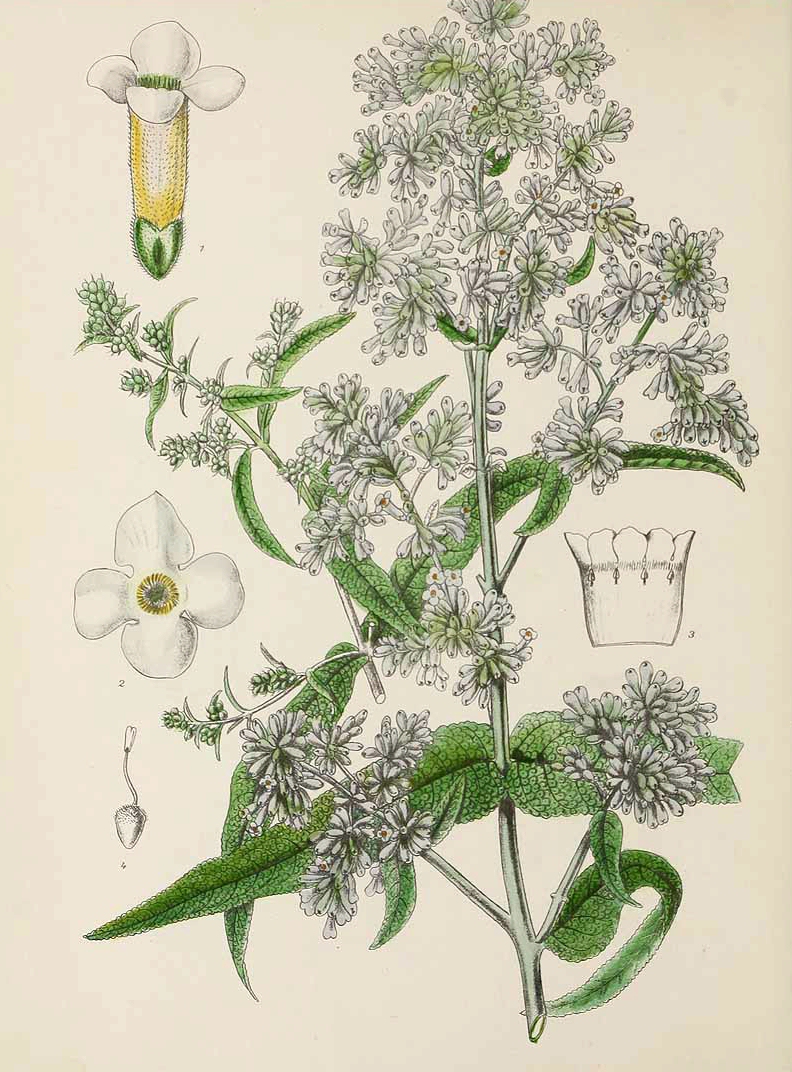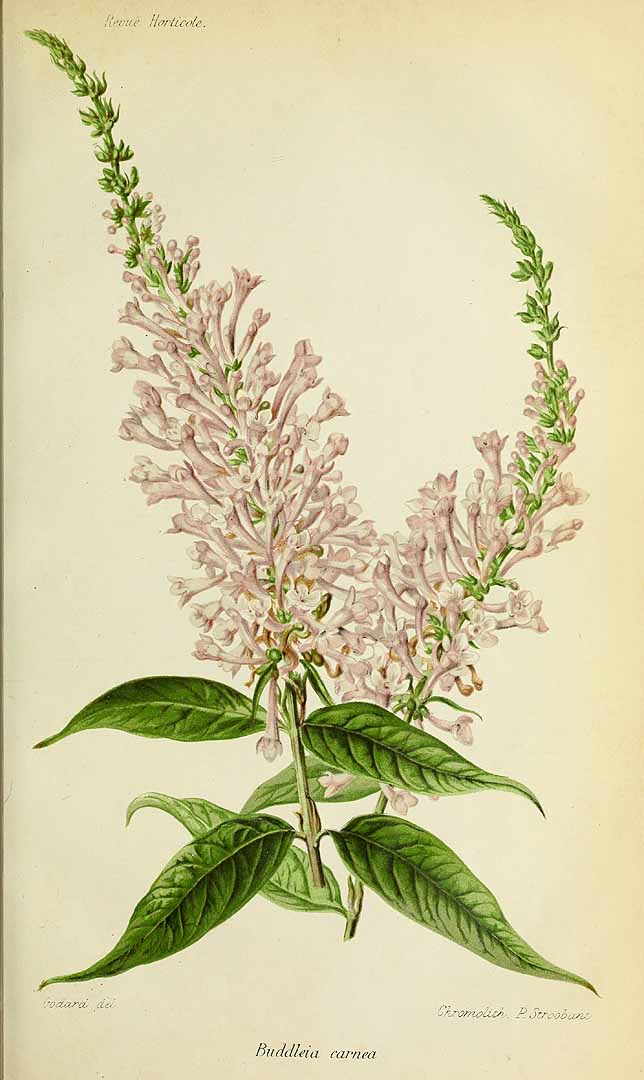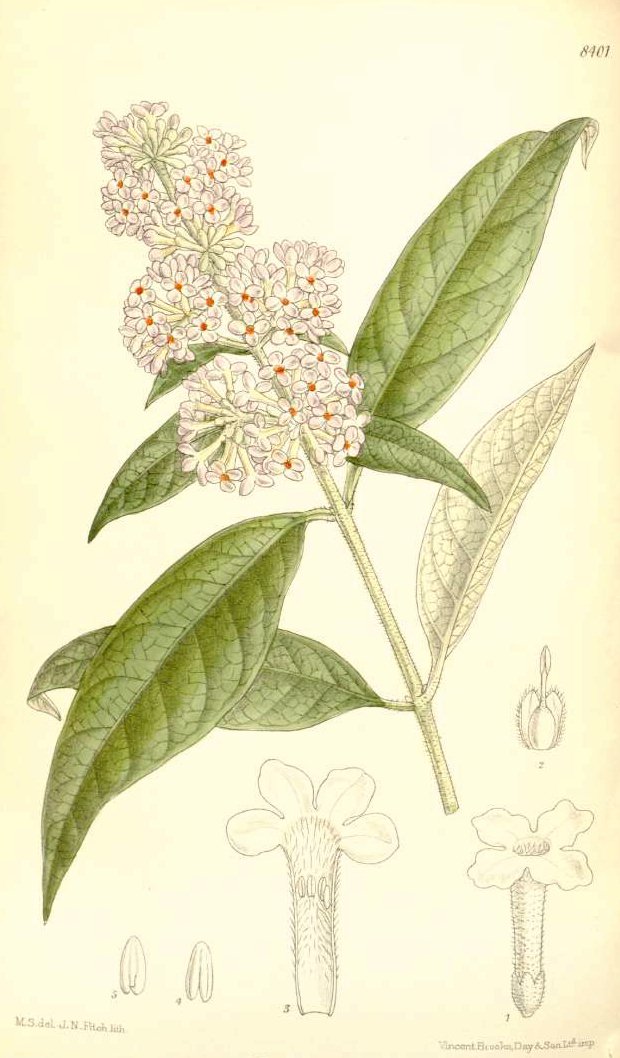
Buddleja
Navigation
E-Mail:
 | |
Click images to enlarge | |
Buddleja auriculataPosted 27th October 2018Buddleja auriculata is a South African species with delicate white flowers, which have an delightful scent, and small glossy leaves. It hasn't proved to be fully hardy in the Midlands and I've had to grow it in a large pot, dragging it into a cool greenhouse for the winter. Always a late bloomer, it is flowering now in at the end of October, just ahead of the first frosts. | |
|
| |
A Double-flowered BuddlejaPosted 2nd September 2018Another new Buddleja is due for release: Buddleja High Five Purple ('Podcept1') is a compact cultivar, which promises an upright habit and profuse lilac-purple panicles with double flowers. Possibly the first double-flowered Buddleja to be widely marketed, Buddleja High Five Purple was bred by Peter Podaras in the USA, who also bred the flutterby and Hinebud series of compact Buddlejas. Buddleja High Five Purple is available online from Crocus. Peter Moore also has a double flowered Buddleja in the pipe-line, which you may have seen on Gardeners' World last week when they interviewed Peter. This is a sterile B.lindleyana variant, and is certainly one to look out for in the near future. Photos coutesy of crocus.co.uk. | |
|
| |
Buddleja macrostachyaPosted 30th August 2018Although labelled B. forrestii RF 040, this is actually an example of B. macrostachya. It was collected from the north-eastern Indian state of Arunachal Pradesh, Anjaw district, in November 2010 by Dick Fulcher at an altitude of between 1600-2000m. Whatever you call it, it's a handsome shrub: large, vigorous and hardier than I expected. Flowering nicely now as well. The plant is superficially very similar to the B. forrestii described below and to another B. forrestii I grow, although the plant shown right is distinguished by the tan-coloured felting on its stems and underside of the leaves. Close inspection of the flowers shows it is B. macrostachya. The exterior of the corolla tube and calyx are covered in dense hair (stellate-tomentose) and the longer corolla tube (compared to B. forrestii) can also be indicative for B. macrostachya; the dissected flower reveals an ovary also covered in hairs. I am reasonably confident of my identification based on these features. Leeuwenberg's monograph (1979) has full descriptions of the two species, including synonyms and illustrations. | |
|
| |
Buddleja Berries and CreamPosted 14th August 2018Something completely different comes along only rarely, and this new Buddleja davidii introduction from Peter Moore, curator of the Longstock Buddleja National Collection, is certainly something different. Bicoloured flowers are not new, but nothing as dramatic as this has been seen before. The panicle is a mix of purple flowers and white flowers, and some white and purple! Unlike many new introductions, I know Peter would have trialled this exhaustively: the plant will be garden worthy and the flower variegation will be a stable trait. Berries and Cream is being readied for release in the UK this autumn, and will be available online from Crocus very soon. Photo coutesy of crocus.co.uk. | |
|
| |
Buddleja japonicaPosted 19th July 2018A while back, I grew a Buddleja japonica from seed. The species is self-fertile: it produces copious seed even in the absense of a suitable pollinating partner. And it comes true from seed as well. The seedling I grew was never happy (stem fungal infection at an early age), so I took a cutting to see if the resulting plant fared any better. Which it did, and I now have a healthy flowering specimen ready to plant into the garden. Considered hardy for the southern UK climate, it dies back to bare twigs in winter, growing vigorously again the next spring. It's not a very popular plant and rarely seen in gardens, perhaps because of this and a repuation for being short-lived. B.japonica, as the name suggests, is native to Japan. A member of the Curvifloræ series (group) of Buddlejas (those with long, curved corolla tubes), which includes B.lindleyana and B.curviflora, it can be distinguished from other species by the lighter-green, toothed foliage and the winged-stems. In common with many of the Curvifloræ Buddlejas, the flowers are purple, although the panicle is not one uniform shade, with individual flowers ranging from a deep colour to very pale. | |
|
| |
Buddleja fallowiana… probablyPosted 12th July 2018At the excellent Batsford Arboretum, I came across a large Buddleja with pale lavender blue flowers and heavily felted foliage. It looked interesting, so I bagged a cutting… legitimally, I must add. I believe it is from wild-collected seed rather than a garden cultivar. The cutting has grown into a strong, thriving plant. Now it has finally flowered, I can hazard as guess as to which species it is. Tentatively, I have identified it as B.fallowiana; very similar to B.davidii, B.fallowiana is distinguished mostly by its felted foliage, stems and flower parts. This plant is indeed abundantly felted. The grey foliage with toothed margins is especially striking. It's isn't so straight-forward though: the two species hybridise easily and their natural ranges overlap, therefore I must consider the possibility of its being a hybrid. From crossing B.fallowiana "Alba" with B.davidii, I've found the features of B.fallowiana to be dominant over those of B.davidii. | |
|
| |
A Different Buddleja Colour-TypePosted 11th July 2018The Buddleja davidii cultivars are starting to flower. Every year I grow a few seedlings just to see what I will get. Often I have rows of boring lilac or mauve seedlings and sometimes I find something a little different. This is one such discovery… and it's nothing like what I was trying to achieve with the cross it came from. The plant is quite a compact and restrained Buddleja. The flowers look initially like a pleasant light denim blue, then you realise the colour is unlike the usual light blue Buddleja shade. A close-up of the flowers reveals that the colouring is not solid, rather the petals are mottled with a darker blue pigment. The camera cannot quite show how this flower differs from similarly coloured Buddleja, but it is certainly an attractive plant with a particularly true-blue appearance. Now I have to decide whether it is good enough and distinct enough to deserve a name. | |
|
| |
Buddleja macrostachya… or is B.forrestii?Posted 3rd July 2018Buddleja macrostachya and B.forrestii are very closely related species, which share much the same Himalayan habitat. Both are extremely variable and a number of types (or former species) were sunk into these two taxons. They also vary with regards to hardiness, with those from Yunnan or Sichuan (mostly the B.limitanea type) being more or less fully hardy and those from northern India, Myanmar etc. possibly requiring a little more protection. The inflorescence shown is that of the plant currently labelled B.macrostachya in a National Collection. With cursory inspection, it might be either B.macrostachya and B.forrestii and, with its slightly fleshy flowers, one could easily err on the side of the former. However, a close inspection of an individual flower is required to make a correct identification. Dissecting a single flower clearly identifies this plant as B.forrestii. In the lower photo, a flower has been bisected to expose the pistil and inside of the corolla tube. The position of the anthers varies in this species, being found anywhere from level with the stigma (such as in this particular plant) to the opening of the throat. Generally, the corolla tube of B.forrestii is quite stubby, and usually shorter than those of B.macrostachya. The plant in question has an ovary, calyx and base of the style which are completely hairless (glabrous), whereas in B.macrostachya these parts should be covered in stellate hairs. To see the difference, compare the photo with this labelled B.macrostachya flower. At the moment my plant is rather straggly, and will take a few more years to build a good structure. It seems slower growing than some of the other B.forrestii/macrostachya cultivars I have, so its planting has been delayed - I intend to plant it in a sheltered spot next year and see how it develops. As with many of these larger Asian species, small specimens are quite tender, but then hardiness increases with age and size. I wouldn't risk this plant to over winter in the ground until it had outgrown a 20 litre pot and was over a metre tall. Leeuwenberg's monograph (1979) has full descriptions of the two species, including synonyms and illustrations. | |
|
| |
Buddleja colvilei "Tregye"Posted 26th June 2018Last time I mentioned a B. colvilei called "Tregye". Last year, I was sent some cuttings of the plant (my thanks to Nicholas Lock), which rooted easily. Although still small, one has managed to produce a tiny bunch of flowers. Once fully grown, these panicles should be huge with up to ten times the number of individual flowers. However, this inflorescence is enough to demonstrate the outstanding feature of "Tregye": unlike other varieties (such as those shown below), this one develops golden-yellow throats that really set off the deep pink-red of the petals. | |
|
| |
Buddleja colvilei "Pink Form"Posted 8th June 2018Buddleja colvilei is a large Himalayan shrub and is possibly the most exotic Buddleja we can grow in the UK. It grows very large and will eventually become a small tree. Not 100% hardy, but in most of lowland England and Wales it can be grown successfully with just a little shelter from the coldest winds, and in May-June it will produce impressive pendulous inflorescences with each flower much larger than in any other Buddleja species. Depending on the severity of the weather, it can keep or lose its leaves in winter. There are quite a few cultivars available in the UK, but by far the most popular is the "Kewensis" variety with intense wine-red flowers, and Kewensis is generally believed to be the hardiest too. Another named variety is "Tregye", which I have been told is an even more intense colour with golden-yellow centres. I am looking forward to seeing that one in flower. An un-named plant that is also sold in some nurseries is the pale pink form in the upper photo, and is the palest colour Ive seen in the species. The leaves are large and paler than other B.colvilei. This will eventually make a very large shrub under the right conditions, but is perhaps a little less tolerant of cold compared to the hardy "Kewensis". I have kept one in a pot for several years, but a spare is now planted in the open. My original plant survived -10°C, loosing its leaves and then growing back strongly before succumbing to vine weevil the very next winter. The lower photo shows a plant I came across at Birmingham Botanical Gardens this week: an old and established tree for which I don't have any additional information. This is a very typical example of the species. The flowers are a less intense red, more like dark pink, compared to "Kewensis" and have a large and conspicuous white throat; the petals are somewhat reflexed (bent back). There must be significantly more the than eight B.colvilei cultivars I have counted so far in the UK. It's a shame they are not all in a single collection where they can be viewed side by side. | |
|
| |
Buddleja globosa "Kevin"Posted 6th June 2018When it comes to B.globosa there is little choice other than orange… although HCM98107 is the exception, being a very pale primrose-yellow. There are a few cultivars to choose from, with "Lemon Ball" being the palest of the orange ones. "Lemon Ball" is a rather weak female plant and is not at all popular. Male plants of this species tend to be more floriferous and showy. The photo shows a yellow-flowered seedling I raised a few years ago, a male plant I've called "Kevin". It is proving to be quite vigorous, hardy and with a good upright habit. And this year it's covered in custard yellow flowers, a conspicously different shade to the common orange cultivars. "Kevin" has a sister, a female plant with similarly yellow flowers, but this is both less vigorous and much shier to flower. | |
|
| |
Longstock GemPosted 22nd May 2018Longstock Gem, a hybrid of B.crispa (type B. agathosma) and B.alternifolia, is flowering now, slighty ahead of B.alternifolia. Plenty of purple flowers in long racemes have followed the first appearance of the narrow silvery foliage (see the foliage below the flowers; the large leaves in the photo are actually from B.colvilei). This hybrid is a perfect intermediate of the two parents, with the individual flowers quite large compared to alternifolia. The scent is quite good, and the plant should prove hardy when I finally plant it outside. Many relatively tender Buddleja become much hardier once they've reached a certain size and this one has definitely outgrown its pot. The various B.crispa types hybridise quite readily with B.alternifolia, both in cultivation and in the wild. Cultivated hybrids include B.X pikei Hever (Castle), a plant similar to Longstock Gem; the naturally occuring hybrids include B.X wardii, once classified as a separate species. | |
|
| |
New "Rocketstar" Mini-BuddlejaPosted 10th May 2018Another year, and another set of small Buddlejas is due to hit the garden centres. These are the "Rocketstar" series available from Bransford Webbs. The series consists of Rocketstar Flamingo (pink, pictured top), Indigo (bottom) and Orchid (not shown). Promising to be less than a metre in height, yet still exceptionally floriferous, they also boast dense foliage, a good branching habit and sturdy stems. The "Rocketstars" join a bewildering array of similarly dwarf plants already available. "Rocketstar" is renamed from the "Pugster" series from Proven Winners USA, which consists of five cultivars: "Pugsters" Pink (syn. Rocketstar Flamingo), Blue (syn. Rocketstar Indigo), Periwinkle (syn. Rocketstar Orchid), White and Amethyst, the latter two yet to be introduced to Europe.
Photos courtesy of Proven Winners. | |
|
| |
NitrogenPosted 21st April 2018Spring is rather late again this year thanks to the "Beast from the East" and its smaller sibling, and then spring arrives with a mini-heatwave. The plants always seem to cope though, even the more tender species. Now is the time to prune the B.davidii cultivars, as well as many of its hybrids which flower in the summer months. Early flowering species like B.globosa should be left until after they have flowered. All Buddleja can be fed now with a compound (NPK) fertiliser, and I prefer to use one that includes trace elements to replace the essential elements lost in pruning. I've never really thought of Buddleja as particularly hungry when it comes to nitrogen, and have always tended towards a high potash fertiliser to promote the flowers. Last autumn I planted out a number of new B.davidii plants into a nitrogen-rich soil. Even in the cooler weather they started to put on leafy-growth, which they have retained all winter when their compatriots in low nitrogen soil have all but lost their foliage. It would be logical to assume the weather determines whether a semi-evergreen species keeps its leaves or not, but it would seem that nitorgen status plays a part too, with the plant using dense foliage as a repository. In future, I may even invest in a nitrogen-rich fertiliser late in summer, as these plants are looking so healthy. | |
|
| |
Buddleja Diary for 2018 coming soon!In the meantime, here are a few antique prints to enjoy; click to enlarge. Buddleja davidii
| |
Buddleja auriculata | |
Buddleja salviifolia | |
Buddleja japonica X B.lindleyana
| |
Buddleja officinalis | |
|
| |
|
| |
Return to the Homepage | |

